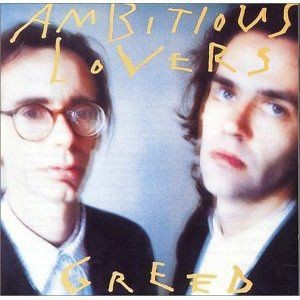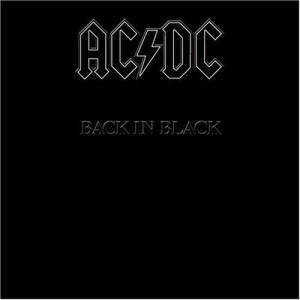Monthly Archives: April 2015
![[Nonesuch Records]](https://musicwhore.org/wp-content/uploads/2015/03/Nonesuch_records_logo.jpeg)
Vinyl collectors tend to specialize. I have a particular weakness for anything on Nonesuch Records from 1985 till the rise of the CD, which is about 1990.
Why these dates? Robert Hurwitz, the president of the label, began his tenure in 1984. He overhauled the label’s roster, bringing in Steve Reich, John Adams, Philip Glass and Kronos Quartet.
The label was most famous at the time for championing modern classical music by the likes of Elliott Carter and John Cage, and Hurwitz started to refashion the label gradually.
Downtown New York jazz artists such as Bill Frisell, Wayne Horvitz and John Zorn came aboard. The Explorer Series paved the way for Le Mystere de Voix Bulgares.
And this transformation happened at the most vulnerable time in my life — adolescence.
If my allowance could have accommodated it, I would have bought every Nonesuch recording on the market at the time. Till then, I snatched up every Kronos Quartet recording I could. I overplayed Adams’ The Chairman Dances and Zorn’s Naked City. Robin Holcomb’s self-titled debut was the soundtrack to my high school graduation.
As of this writing, there are 152 items from Nonesuch in my collection. It outstrips the next ranked label, EMI, by 48 percent.
Would my loyalty to the Nonesuch brand be as strong if I discovered the label later or earlier in life? I think I’d arrive at the same place eventually.
My discovery of Nonesuch also happened at a time when I was not sufficiently funded to pursue it. So a lot of albums slipped through my fingers.
Whenever I flip through used bins of vinyl or CDs, I watch out for Nonesuch titles from the latter half of the 1980s. Before the minimalists and Kronos dominated in the roster, the label put out modern music by American composers.
Adams inaugurated the Meet the Composers series, which would release works by John Harbison, William Kraft, Stephen Paulus, Libby Larsen, Joan Tower, Tobias Picker and Joseph Schwantner. Stephen Albert, George Perle, Ingram Marshall and Scott Johnson released albums as well.
Browse the Nonesuch web site today, and you might run into some of these old titles. But they’re de-emphasized, almost treated as footnotes in the label’s march to be an eclectic curate. The Albert album hasn’t been made available as a digital release. Nor the only album recorded by Ani and Ida Kavafian.
So it’s these un-reissued albums that catch my eye. I have my fill of Reich, Adams and Kronos. Now I want to hear what else I missed during that influential time.
Tags: in pursuit, nonesuch records
![[Jason Isbell - Something More Than Free]](https://musicwhore.org/wp-content/uploads/2015/04/JasonIsbellSomethingMoreThanFree-300x296.jpg)
Part of me still misses ICE Magazine, the publication dedicated to reporting on new releases and reissues. Super Deluxe Edition has done a good job recapturing the kind of reporting that went into ICE. I’ve adjusted to using Pause and Play for tracking new releases, but sometimes, I get more relevant information from the personalization features on Discogs.
ICE launched in the early ’90s to track compact disc releases. It ended publication just as the download market ate into CD sales. If a similar publication were to launch today, it would probably report on which artists have made their content exclusive on which streaming service. And vinyl. Talk about turnabout being fair play.
10,000 Maniacs, Twice Told Tales, April 28
This latest incarnation of 10,000 Maniacs brings Mary Ramsey back into the fold and welcomes a guitarist who also doubles on vocals. For this album, the Maniacs reach for the roots, covering the traditional music that has informed their sound.
Roomful of Teeth, Render, April 28
Sometimes I wonder what would happen if I had the temerity to stick with my composition studies in college. It might have sounded like the stuff happening in Brooklyn with the likes of Roomful of Teeth, So Percussion and Alarm Will Sound.
Takaakira Goto, Classical Punk and Echoes Under Beauty, May 5
Taka wrote this album around the time MONO started getting orchestral. I’ve enjoyed the rougher sound of Rays of Darkness too much to want to go back in time.
Emmylou Harris and Rodney Crowell, The Traveling Kind, May 12
Brian Ahrens didn’t produce this second duet album, but Harris and Crowell wanted The Traveling Kind to reflect where they are as artists now. It’s hard not to have high expectations.
Deebs/Jarrell Perry, Shift, May 19
A lot of attention will focus on the second album by Frank Ocean, but for my money, Jarrell Perry does a far more adventurous job pushing the edges of R&B.
Faith No More, Sol Invictus, May 19
Yeah, yeah, insert grumbling about Jim Martin’s lack of involvement here. I’m still curious.
NOW Ensemble, Dreamfall, May 26
See above about labelmates Roomful of Teeth.
Jason Isbell, Something More Than Free, July 17
Damn, Jason Isbell is looking mighty fine on that cover photo. I couldn’t get enough of Southeastern, so I’ve spent the last few months devouring his 2011 album Here We Rest. Now a new set is just going to keep this jones going.
Frank Ocean, Boys Don’t Cry, July 2015
Hey, Frank, could you convince Universal Music to put out a decent vinyl issue of channel ORANGE as well? Thanks.
Duran Duran, TBD, September 2015
Not since Colin Thurston has Duran Duran worked with the same producer twice. Mark Ronson brought out not just the vintage sound of Duran Duran but also the unmistakable essence of a Duran Duran song. Here’s hoping the latter gets retained if the former evolves.
Tags: 10000 maniacs, deebs, duran duran, emmylou harris, faith no more, frank ocean, goto takaakira, jarell perry, jason isbell, looking ahead, now ensemble, rodney crowell, roomful of teeth

I really did intend to buy Greed when it was first released in the late ’80s.
I was a devoted reader of Pulse! magazine, and the feature it ran about Ambitious Lovers made me think Greed would be something I’d like. I had just gotten into Kronos Quartet and downtown New York jazz, and Arto Lindsay certainly hung around the likes of John Zorn, Bill Frisell and Joey Baron.
But I was on a budget. I had to be strategic about what I acquired.
So Greed got pushed aside for other things — Broadway musicals, Duran Duran, all the stuff that would eventually turn into alternative rock.
I soon convinced myself that in reality, I wasn’t terribly interested in Ambitious Lovers after all. Back then, I couldn’t preview any of the music I was interested in pursuing. Radio and MTV were useless, so I had to rely on the printed word. Up until the era of downloading, press reviews really were my means of discovery.
But reading about music isn’t the same as listening to it. I lucked out a lot with my faith in reviews, but I also ended up getting just as many duds.
In short, the word of mouth around Ambitious Lovers wasn’t strong enough to convince me to plunge.
Now that I have a disposable income, a $4 worn vinyl copy is no imposition at all, so I picked it up to sate my curiosity.
I’m pretty sure I would have kept it in my collection had I bought it back then.
Lindsay sprechstimmes his way through the album, staying approximately in tune long enough to deliver a catchy chorus. The dated rhythm machines and synth bass mix remarkably well with the bursts of noise from Lindsay’s guitar.
Even Zorn doesn’t sound out of sorts on his brief appearance on the album. The quieter moments aren’t as impressive as the funkier, noisier bits.
In short, Greed is a pop album ground to bits by the downtown New York aesthetic. I’m glad I bought it eventually.
Tags: ambitious lovers, vinyl find

Back in Black has meant different things to me over the course of forty(mumble-mumble) years.
In my childhood, the album represented scandal. My dad hated the color black, which meant this album got his withering disapproval. The mock calligraphy of the band’s logo surely meant something altogether unseemly, and didn’t AC/DC stand for “After Christ/Devil Comes?” That was just too much for my devoutly Catholic parents.
But my brother took it all in. Asia, Blue Oyster Cult, Foreigner, Toto, AC/DC — it seemed pretty rebellious to me. I stuck with ABBA and Manhattan Transfer.
In my teen-aged years, the album represented stagnation. I had become an insufferable post-punk, and I sneered at classic rock. The future was R.E.M., the Dead Milkmen, Camper Van Beethoven. If you listened to AC/DC, you were stuck in the past and had no clue.
In my early adulthood, the album was persona-non-grata. There was all this Japanese indie rock to explore. And all the music festival buzz bands. And a few local bands who put on great shows. AC/DC? I’m not their target market. They’ve got enough fans to earn them coin. They don’t need my cash.
Today, Back in Black, for me, is that-one-album-you-get-from-a-band-of-which-you’re-not-a-fan. You know the one: Oh, Inverted World, Storm Front, Born in the USA, White Blood Cells. It’s the album that transcends any misgivings you may have about a band.
AC/DC hew close to the blues-based tradition forged by the Rolling Stones and Led Zeppelin, a tradition rejected by the punk-rooted bands of my formative years. But Back in Black struck that fine balance between rock ‘n’ roll grit and pop radio polish that allowed the album to belong to more than just than fans.
Even if you didn’t like blues-based rock, it was hard to get the riff that started side two out of your head.
Back in Black didn’t convince me to become an AC/DC devotee, but it also helped me not to dismiss them out of hand. I may never become their target market, but at the very least, I’m a fan of something they made.
Tags: ac/dc, my brother's albums, sibling rivalry collection race
![[Nonesuch Records]](https://musicwhore.org/wp-content/uploads/2015/03/Nonesuch_records_logo.jpeg)
![[Jason Isbell - Something More Than Free]](https://musicwhore.org/wp-content/uploads/2015/04/JasonIsbellSomethingMoreThanFree-300x296.jpg)

